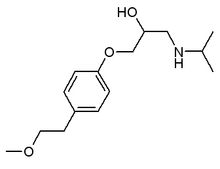Chronic heart failure is a common and disabling condition for which current treatment guidelines recommend combination therapy with diuretics, angiotensin-converting enzyme (ACE) inhibitors, and beta blockers. Digoxin may be added in some cases, and aldosterone inhibitors often are used in severe cases of heart failure. Beta-blocking drugs have different pharmacologic profiles, and the optimal agent has not been determined. Poole-Wilson and colleagues conducted the large, multicenter Carvedilol Or Metoprolol European Trial to compare the efficacy of the two agents in the treatment of patients with mild to severe chronic heart failure.
The study involved 3,029 patients in 15 countries between 1996 and 1999, with follow-up until 2002. Patients included in the study had confirmed symptomatic chronic heart failure (New York Heart Association classes II to IV) and had been treated with diuretics for at least two weeks and ACE inhibitors for at least four weeks. Patients who had contraindications to beta blockers or unstable angina, myocardial infarction, or coronary revascularization or stroke within the previous two months were excluded from the study. After baseline assessment, 1,511 patients were assigned to carvedilol (3.125 mg twice daily) and 1,518 patients were assigned to metoprolol (5 mg twice daily). The dose of each agent was titrated to achieve a target dosage of 25 mg twice daily of carvedilol or 50 mg twice daily of metoprolol. Patients were assessed every two weeks during the drug titration phase, then every four months during the maintenance phase. Patients were asked to report any adverse events and were followed for mortality or hospital admission.
The baseline characteristics of the two groups were comparable, and small equivalent numbers in each group withdrew consent or were lost to follow-up. Fewer patients treated with carvedilol (512) died than those treated with metoprolol (600); this benefit in mortality was apparent after six months of treatment. The majority of deaths among patients in both groups were attributed to sudden death caused by circulatory failure. Rates of hospital admission were similar between the two treatment groups (see accompanying table). Adverse effects were reported by more than 90 percent of patients in both groups, and 75 percent of those receiving carvedilol and 77 percent of those receiving metoprolol reported at least one serious adverse event. Slightly more than one half of the patients had at least one serious cardiovascular adverse event such as bradycardia or hypotension. In both groups, 32 percent of patients stopped taking the study drug.
The authors conclude that carvedilol has a greater benefit than metoprolol when added to diuretic and ACE inhibitor therapy in the treatment of heart failure. This may be the result of the difference in the receptors blocked or other effects of carvedilol, such as increased insulin sensitivity and antioxidant effect on endothelial function.
Poole-Wilson PA, et al. Comparison of carvedilol and metoprolol on clinical outcomes in patients with chronic heart failure in the Carvedilol Or Metoprolol European Trial (COMET): randomised controlled trial. Lancet July 5, 2003;362:7-13.
COPYRIGHT 2004 American Academy of Family Physicians
COPYRIGHT 2004 Gale Group



